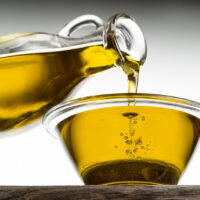A guide to the different types of probiotic yogurt
Probiotic yogurt is primarily cultured or fermented milk, which is soured and thickened by adding specific lactic acid-producing cultures to warm milk. Probiotics are the microorganisms or the good bacteria that our body needs to maintain a healthy gut.
Some of the common cultures found in the best probiotic yogurts are:

- Lactobacillus bulgaricus
- Streptococcus thermophilus
- Lactobacillus acidophilus
- Lactobacillus casei
- Bifidus
All these help to maintain the balance of bacteria, which boost the human immune system and promote a healthy digestive tract. The American Gastrointestinal Association recommends probiotic yogurt to help improve lactose digestion, prevent constipation, and irregular bowel movements. The best Greek yogurt probiotics have become a staple on American breakfast tables.
The most commonly found types of probiotic yogurts include:
Low-fat or non-fat: Specially made by fermenting low-fat milk or skim milk, this is a very healthy option for people following a low-calorie diet. As its name suggests, along with having a minimal amount of fat, it also boasts of beneficial nutrients like calcium and potassium, which improves bone and muscle health.
Swiss-style or stirred yogurt: This is the traditional yogurt or curd made by fermenting milk in a large tank, cooling it down, and then stirring it for a creamy texture. You can find the best probiotic yogurts in various flavors, which have fruit purees added into them.
Sundae style: The flavored ingredients are generally found on the bottom of the container to pique the interest of the buyer. These are eaten by inverting them into a bowl to enjoy all the tastes together.
Balkan-style or set-style: As the milk used for this type of yogurt is fermented in individual containers rather than a large tank, the result is a creamier and thicker yogurt than the mass-produced Swiss-style yogurt.
Greek-style: You can enjoy this thick, creamy yogurt either in its plain or flavored form. Also known as the Mediterranean-style yogurt, it is thicker and creamier than all the other yogurts available in the market as it uses the triple straining method to get the final product. This is one of the best probiotic yogurts that you will find in any store. The best Greek yogurt probiotics are preferred by most health-conscious people not only because of its taste and texture but also because of its high protein content.
Kefir: This is a type of yogurt is made by using starter grains containing beneficial yeast as well as friendly probiotic bacteria similar to those found in yogurt. It is believed that the naturally occurring bacteria and yeast in kefir combine symbiotically to give superior health benefits with regular consumption. The advantage of Kefir is that it can be made from any kind of milk. Also, as it is runnier than regular yogurt, it is easy to drink directly.
Skyr: Traditional to Iceland, this form of yogurt is becoming famous across the world for its strained yogurt consistency and milder flavor. It is normally a little sour with a hint of residual sweetness. Traditionally, it is served chilled with milk and sugar, though companies are now adding common flavors like vanilla and berries to make it more appealing.
Frogurt: Frozen yogurt is the dessert made with yogurt with added flavors like in an ice-cream. It is usually a little tart in taste and has fewer calories in comparison to ice creams as it uses milk and not cream in the process of preparation. Most probiotic yogurt brands maintain that the good bacteria are present in the dessert and gets activated as it reaches the gut.
Non-dairy yogurt: These are the best probiotic yogurts for all lactose intolerant persons and vegans. Non-dairy yogurts are usually made from soy, almond or coconut milk and have all the added benefits of probiotic yogurts.











